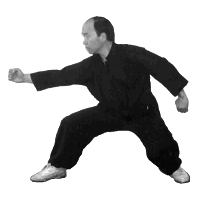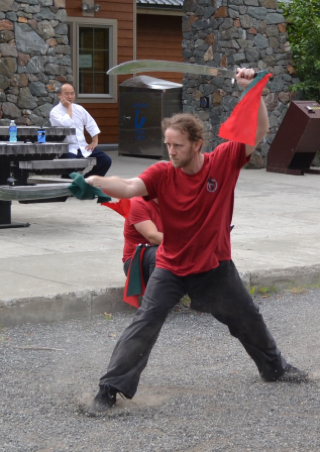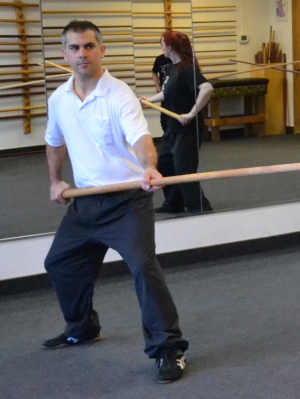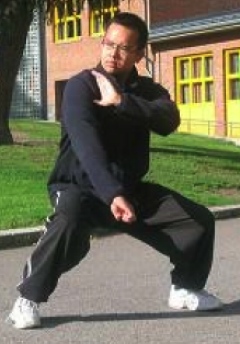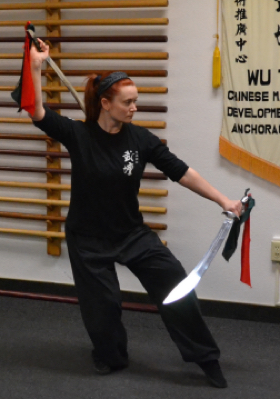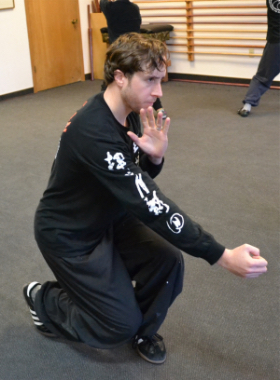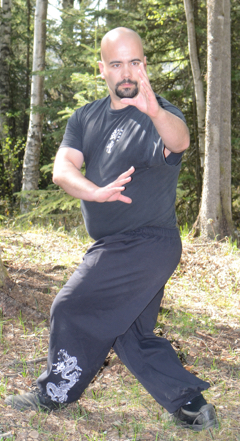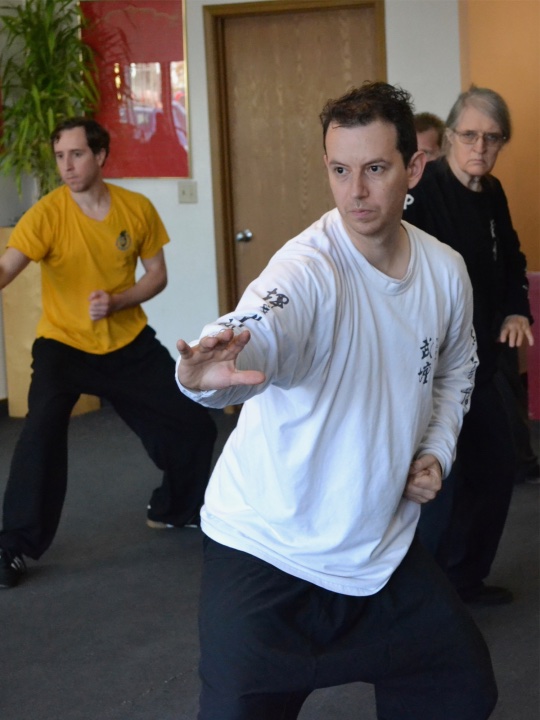What do we mean by “Master”?
Due to the difficulties of translating subtleties of respect which are understood and assumed without need for outward clarification in one culture into the language and social reality of another culture where these expectations and understandings of rank and respect are generally expected to be clearly defined; we have adapted a system to explain and delineate the terms used herein.
First, we need to address what it means to be a Sifu – a Master – in the Traditional sense. The term means “teacher, father, master”. In fact, there has never been a specific set of standards for receiving this appellation – though there are a few basic ways it traditionally came about. The first is simply through individual recognition and declaration of self to a renowned or accomplished Kung Fu practitioner – thereby making that practitioner the student’s “Master”. The second way one can be a Master is trial by combat against accepted Masters – either directly or via proxy through senior students. The third way is connected with the first two and is by acclamation of peers – if one proved oneself to the local Masters in a large city or region then one might be called by this term. The last is simply that one’s own Sifu has determined that you should carry the title as well. Ideally, this implied or meant that the person called a Sifu – Master – had achieved the highest levels of skill and achievement in their chosen Art. This last description is certainly true of Master Wong and all the Masters senior to him in our lineages at Wu Tan (and many of his contemporaries certainly!). The most clear and simple definition of a Master is one who has accepted and is training Disciples in the highest levels of their Art.
While there is no such thing traditionally as a “Grandmaster” (though there are certainly titles of respect specifically for your teacher’s teacher including Sigung and Shiye), that term is used here simply to describe those Masters who have trained students to the level of Master themselves – thus following the interpretation of Sifu or Master as “father”, the term “Grandmaster” is a simple way of clarifying the relationships in English. Furthermore, at the Wu Tan Kung Fu and Tai Chi Institute we would only ever refer to Sifu Wong as simply “Sifu” because he is the Master of the school and would always include one of our names if using our own title (“Sifu Adamor “Sifu Carpenter”) to clarify. When visiting Sifus come, we use the English appellation “Master” (as in Master Yang, Shu-Ton), to avoid confusion – even Grandmaster Su preferred we simply address him as “Master Su” (“Maestro Su”) and we choose to add the “Grand” out of respect and recognition.
What does it mean to be a “Sifu”?
Speaking for myself (Sifu Kevin Walle), I perceive this title to be the entrusting of a burden and not the granting of an award or an acclamation of achievement or skill. To be a Sifu of Wu Tan is to accept and seek to fulfill the role of caretaker for some of the most precious martial arts lineages in the Traditional Chinese Martial Arts. If one has received this title from their own Sifu (Master), as I have, it is a shock and certainly does not feel deserved when one compares oneself to their own Sifu – this is how it should be and remains for me to this day. To be worthy, a Sifu must constantly be seeking to continue to develop their own skill and understanding and diligently and rigorously test their assumptions and real capabilities; they must earnestly and honestly seek to pass on their Arts to all worthy students to their utmost ability and always seek to guide every student to the highest levels of achievement; most importantly, a Sifu must always seek to improve themselves as a person and to honestly and openly face their own failings. Finally, a Sifu should inspire students to develop a loyal and righteous spirit by modeling this same effort diligently and transparently in the way they show their filial loyalty to their own Sifu.
What are “Disciples” or “Closed-Door Students”?
Traditionally, there were four main pathways to learn martial arts. 1: Join the military or police force or outlaws. 2: Learn an inherited family style or a village/regional style through family association and/or relation. 3: Join and train under an established Master in an established school. 4: Learn directly from the Master – similar to a Master-Apprentice relationship but much closer. Over time styles are created and taught; then lost or preserved. Within most styles or schools are techniques, forms, theories, or complete systems which may be reserved to be taught to a select few; these are the “Disciples” or “Close-Door” students of the Master and therefore “members” of the lineage of that Master/Style. In examples 1 and 3 above, the students chosen as Disciples (Closed-Door Students) may come from many backgrounds but are thereafter considered “Kung Fu Brothers”. In example 2 the original students were certainly all relatives of the Master or trusted local citizenry and only some of these would have become “Disciples”. In example 4, the Master would make it emphatically clear who was or was not a “Disciple”. In simplest terms, this refers to students who have demonstrated to the satisfaction of their Master that they may gain access to the Master’s higher or more cherished Kung Fu and become a part of the lineage; it does not necessarily imply the Master has empowered them to teach or pass on the knowledge or that they have achieved a particular level of skill – simply they have been deemed worthy of a chance to receive these transmissions.
In Wu Tan there are a number of lineages of specific styles but we primarily identify ourselves in terms of the “Wu Tan” Lineage originated in Grandmaster Liu, Yun-Qiao – primarily Baji Quan/Pikua Zhang and Bagua Zhang. When Grandmaster Liu was first approached by a young Master Dr. Leung - and shortly after young Master Su and Master Hsu, to teach them personally, he was already employed training the Presidential Bodyguards of Taiwan Baji Chuan. Traditionally, a Master who opens a school would name it for his primary style, but due to his primary style of Baji being the style he was teaching to the government he instead referred to a poem he had written for the name of his school. The first two characters of this poem are Wu Tan. Wu is the character for martial arts and Tan refers to a place for – or the act of – cultivation (as in a field (of some crop), an altar, or a school – or the associated proper behaviors in these places); i.e. Wu Tan is a place for the cultivation of martial arts.
The tradition at Wu Tan is for each generation of Disciples to be referred to by the consecutive characters of Grandmaster Liu’s original poem. Master Leung, Master Hsu, Master Su, Master Chen, and Master Wu are examples of the “Wu” (Martial Arts) generation. Master Wong and his kung fu brothers like Master Tsou, Master Yang, and Master Guo (among others) are in the “Tan” (Cultivation) generation. Disciples of the Tan generation Masters (like Sifu Lianto or Sifu Walle) are in the “Kwong” (Light) generation. Not every school follows this tradition, and those that do may determine generation somewhat differently. Some Wu Tan schools – including the Wu Tang Kung Fu and Tai Chi Institute – reserve training in Baji Chuan, Pikua Zhang, certain weapons forms, and portions of Bagua Zhang for accepted Disciples only; other Wu Tan schools teach these styles openly. Ideally, a Disciple will dedicate themselves to Wu Tan and to the Mastery of the arts of Wu Tan in order to carry on and pass on these Traditional Chinese Martial Arts.

